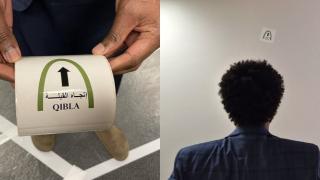
I will always remember the day my provider told me I was high risk for breast cancer. This led to a breast MRI that identified a suspicious mass that ended up being breast cancer. But I will always be thankful that my cancer was found early. My treatment could have been more extensive, and the cancer could have become terminal had I not followed the high-risk screening recommendations. As a physician assistant, it is both my job and a personal calling to make sure I educate women on their risk for breast cancer.
Who is at high risk?
Your provider could use one of several different calculators. In my practice, I use the Tyrer-Cuzick Model, also known as International Breast Cancer Intervention Study (IBIS) tool. The IBIS tool considers various risk factors and provides estimates for the chance of developing breast cancer over the next ten years and over a woman's lifetime. If the score is over 20% for lifetime risk, then additional screening is recommended. Questions included in the scale:
- Age, height, and weight
- Age of first period
- Age of menopause, if applicable
- Breast density (determined on a mammogram with the Breast Imaging-Reporting and Data System)
- Number of children and age of first delivery
- Personal history of breast biopsies
- Use of hormone replacement therapy
- Ashkenazi Jewish heritage (higher population of having breast cancer gene (BRCA) genetic mutations)
- Family history of breast and ovarian cancers
What does screening look like for high-risk patients?
For most individuals, mammograms will begin at the age of 40 and breast MRIs at 35. If there is a family history of a relative diagnosed before 50, imaging should start ten years before the youngest diagnosed. The mammograms and MRIs should be yearly but alternating so the patient receives imaging every six months. Yearly breast exams are also done and can correlate with one of the imaging tests. Many patients ask about prophylactic mastectomies – surgery to remove one or both breasts – as a risk reduction method, but current guidelines only recommend this for patients with certain genetic mutations.
How can I reduce my risk of breast cancer?
Most of the factors listed above are non-modifiable breast cancer risk factors, meaning there is nothing you can do. Meanwhile, the risk factors you can influence are lifestyle recommendations:
- Stop smoking: smoking increases the risk of many cancers. Smoking early in life, combined with a family history of breast cancer, puts you at the greatest risk.
- Reduce alcohol consumption: Moderate (1-2 drinks per day) alcohol consumption has been linked to an approximate 30%-50% increase of breast cancer.
- Maintain a healthy body mass index (BMI): after menopause, your breast cancer risk increases by about 12% for every five-point increase on the BMI scale.
- Exercise every day: Moderate and vigorous exercise has been shown to decrease the relative risk for breast cancer by 18%-20%. Moderate is defined as getting your heart rate up 50% to 60% over resting for two and a half hours a week. Vigorous is working at 80% to 95% of the maximum heart rate for 75 minutes per week.
- Breastfeed your baby: This may not always be modifiable for many patients, but the risk of breast cancer can be reduced by 4.3% for every 12 months of breastfeeding, which adds to the 7% risk decrease for each birth.
I will also briefly mention there are some medications that can be prescribed for high-risk patients. Chemoprevention is the term used, and it includes aromatase inhibitors (AIs) and selective estrogen receptor modulators (SERMs). These medications block the hormones from "feeding" a potential cancer. A referral to a medical oncologist to have an in-depth conversation about the pros and cons of these medications will help patients decide if these medications are right for them. Breast cancer is a leading concern since one in every eight women is diagnosed in their lifetime. I am grateful that we live in a time where we have a better understanding of which patients require additional screening and can therefore detect and treat breast cancer earlier. Remember, we do not die from breast cancer that stays in the breast. We can die from where it goes. So, let us find it before it has the chance to spread!

About the author
My name is Sara Tsantes, and I am a Physician Assistant in the Cancer Center. I am very passionate about finding other women who are at high risk for breast cancer and making sure they are educated and properly screened. I was very fortunate to have had a mammography technologist take the time to ask me a few questions about my risk, which led to me getting an MRI and detecting my cancer that was not seen on a routine mammogram. I can now say that I am cancer-free and hope to share my story with other patients who are referred to me for high-risk screening.



